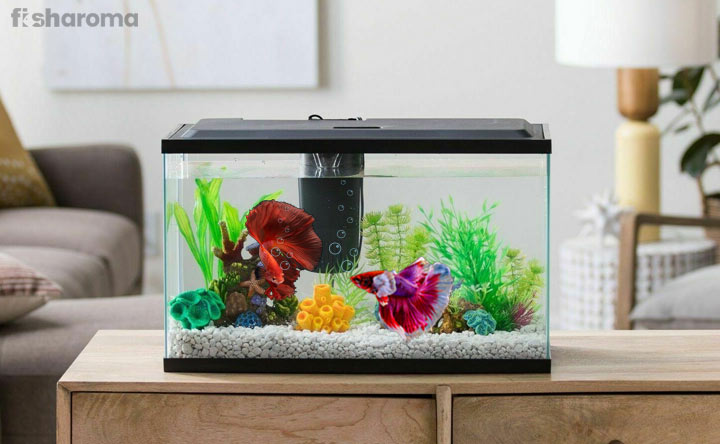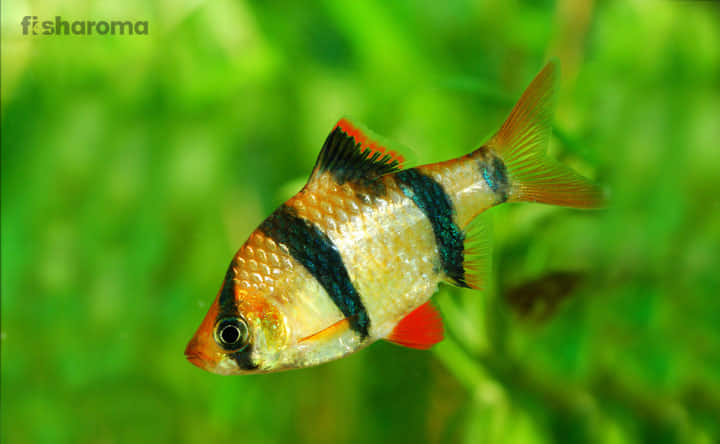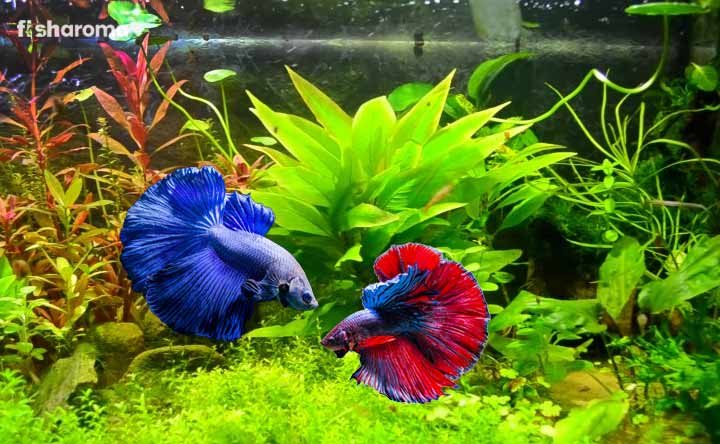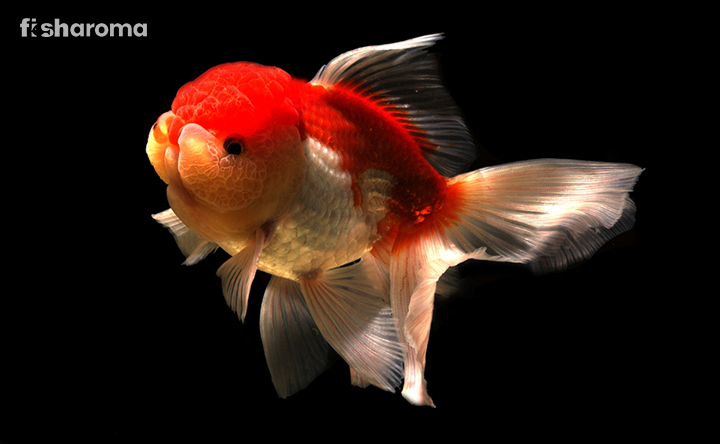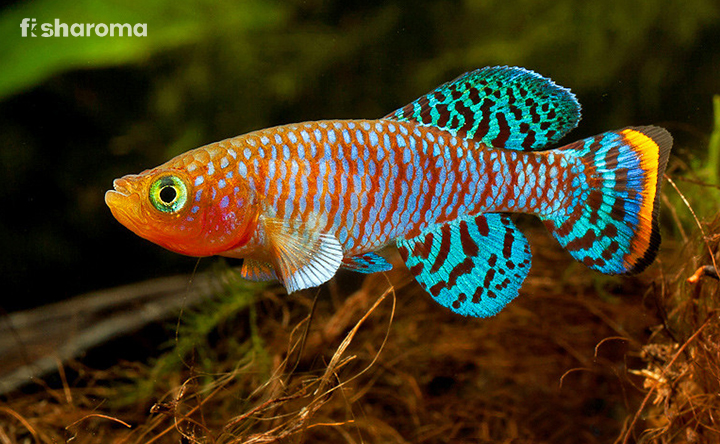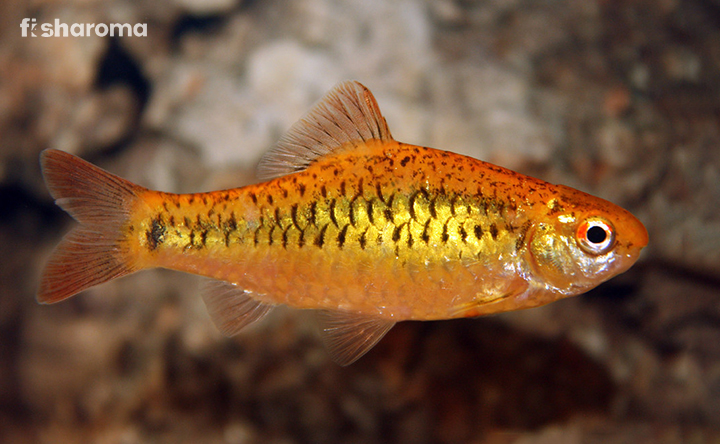Discus Fish – The Complete Care Guide for Your Stunning Buddy
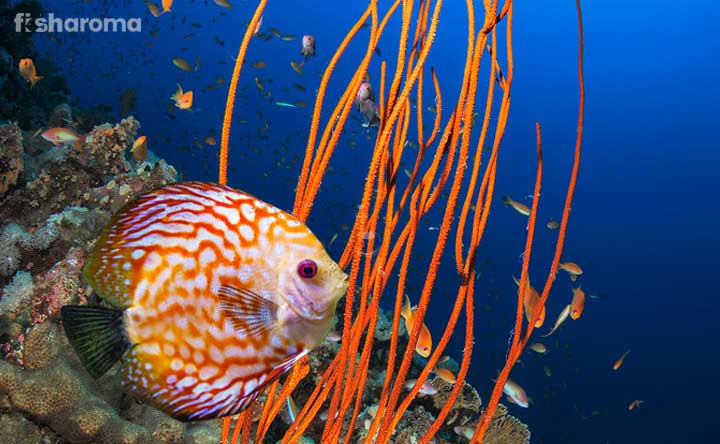
Like Goldfish and Betta Fish, Discus Fish is also a popular freshwater fish that is often kept in beginner’s aquarium because it is very beautiful and calm in nature. This fish is known as the king of the tropical aquarium because of its vibrant rainbow colors and amazing pattern which adds elegance to a fish tank.
Quick Details on Discus Fish
Fishkeeping is a good hobby but with the fascinating hobby, it is your prime responsibility to take care of the fish breeds of your aquarium. Here we have provided a short table where you can get quick details about the fish:
| Scientific Name | Symphysodon |
| Origin | Amazon River (South America) |
| Life-Span | 10 years |
| Colors | Yellow, Brown, Red, Blue, Multicolored and Turquoise |
| Temperament | Peaceful |
| Size | 8-10” (20.32-25.4 cm) |
| Diet | Omnivoros |
| Family | Cichlidae |
| Compatibility | With Other Peaceful Species |
| Tank Size | 50 gallons |
| Care Level | Easy-Moderate |
Overview
Discus fish belongs to the family of Cichlid and it is a hardy fish, so it can live in every type of water. You don’t need a special arrangement but you can follow a proper care guide for nourishing this beautiful species in your aquarium.
Discus is known as the king of the aquarium because of its aesthetic coloration and shape. Moreover, it is a hardy fish which is suitable for both expert and novice aquarists. Usually, this fish can live up to 10 years but if aquarists take proper care of the fish then Discus can live up to 15 years also. Not much, you will get this fish in $25-$40.
Origin of Discus Fish
This fish was first found in 1933 by Dr. Herbert R. Axelrod. Like Angelfish, Discus is an inhabitant of deep rivers like the Amazon River Basin in South America. You will also get this fish in the Peruvian and Venezuelan flood basins.
Now, this fish is also found in Asian countries, and people also know this fish by another name, ‘Pompadour Fish’.
Appearance of Discus Fish
The disc-shaped appearance of Discus is the reason behind its name. Some fish are triangular and round in shape, and their body is thin and flat. The anal and dorsal fins of this fish are small and round in shape. Body of this fish can grow up to 8-10” (20.32-25.4 cm). The popularity of this fish is not only for the colors but also because of the amazing shape and size.
You will get brown, green, red, yellow and blue Discus Fish for your residential and commercial aquariums. There are vertical and horizontal stripes on the fins, tail, and body of the fish which is either colorful or black. However, this fish starts losing color if it is in stressful condition. You will also get different shaded eyes of this fish such as red and black.
The genital papilla of male fish is flat and the female genital part is round. The females are slightly fat and rounder than the males because of the eggs or roe-filled stomach.
Types of Discus Fish
Usually, the living condition, eating habit, shapes, and sizes of all the Discus fish are same. The types, patterns and colors of various Discus fish are categorized below:
Heckel Discus: John Heckel was the founder of this fish, so this dark-striped multi-colored fish is known as Heckel Discus fish. You will find this fish in blue and red varieties also. There are three bold verticals bars on the body of this fish.
Green Discus: You will find both dark and light-shaded Green Discus that are dotted with bright red spots and black stripes on the entire body. The eyes of this fish are blood-red in color.
Brown Discus: The Brown Discus is faded brown in color with black bands on its body. The fins of this fish are dotted with blue dots.
Turquoise Discus: This fish is of two varieties – blue and red. This breed is known as Turquoise Discus because of the turquoise shade on the fins of this fish. Usually, the body of this fish is white and the body is patterned with red or blue stripes.
Snakeskin Discus: The body of this fish is like the skin of Python snake with lines and striations. There are about 14 vertical blue and red lines or bars on the body of this fish.
Spotted Discus: This is a cross breed from Green Discuss and Turquoise Discuss. This fish is also known as Leopard Discus because of the leopard pattern on its body. You will find red and orange spots on the body of this fish.
Pigeon Blood Discus: The cream and white body of Pigeon Blood Discus is covered with bright round stripes. Its tail is either transparent or black in color. The eyes of this fish are black which are surrounded by a bright red circle.
Golden-Yellow Discus: Golden Discus has a solid yellow body, red eyes, and dim-white stripes. The fins and tail of this fish are semi-translucent.
Blue Diamond Discus: Blue Diamond Discus was first founded in Hong Kong and Malaysia. The color of this fish is shimmering cobalt blue and its fries are in transparent shade. If you keep it in your aquarium then the water of your fish home will shine like a diamond because of its shining color. The fins of this fish shine more than its body.
Red Discus: Two shades are found in Red Discus; one is brown-red and another is bright-red in color. The head portion of this fish is yellow or white in color.
White Discus: The White Discus has a clear milky-white body, silvery fins, and black shimmering eyes. This is a cross breed of red and golden shaded Discus.
Albino Discus: This fish has an orange body, white fins, and tail. The eyes of this fish are reddish-white in color due to the lack of melanin in body.
Temperament of Discus Fish
This fish avoids conflict through intimidation and escape because it is a peaceful fish which is perfect for a community tank. Moreover, this is a schooling fish, so it prefers living in a shoal of own community.
This fish is hardy and it can live at the top, middle, and bottom of the fish tank. Hence, it is proved that this fish can dominate all levels of the aquarium. Discus is a free swimmer, so a spacious aquarium is necessary for it. So, avoid overcrowding its tank with many fish breeds to avoid conflict. Moreover, driftwood, plants, and caves are necessary for this shy fish that likes hiding behind the plants and in the caves when it feels threatened or insecure.
Suitable Tankmates for Discus Fish
The social, calm and active nature of this fish makes them friendly to other species of peaceful temperament. Aquarists can easily keep this fish with the schooling breeds that are passive in nature and don’t harm others. Here is a list of a few suitable companions of Discus which can be its perfect tankmate.
- Rummy Nose Tetra
- Neon Tetra
- Ember Tetra
- Pencil Fish
- Bolivian Ram
- Sterbai Cory Catfish
- Gourami Fish
- Marble Hatchet Fish
Unsuitable Tankmates
You cannot pair Discus with aggressive and large predator fish which can fight, harm and end up eating this fish. Some fish breeds should be totally avoided to keep in a Discus tank like:
- Oscar Fish
- Sharks
- Arowanas
Compatibility of Discus Fish
Discus is a schooling fish which loves to live with a shoal of Discus and other schooling or peaceful species which will never harm them. So, you can keep about 5-6 fish in a tank of Discus but if you want to brighten your tank with much fish then arrange a huge aquarium for your pet fish.
Dietary Requirements for Discus Fish
This omnivoros fish likes consuming plants and vegetation more than meaty foods. Feed them 3-4 times a day but the uneaten foods should be cleaned from the fish tank. If you want to maintain the bright colors of the fish then try to feed them meats and vegetables in an equal proportion. Some of the favorite foods of this fish are:
- Bloodworm
- Arthropods
- Amphipods
- Copepods
- Crustaceans
- Algae
- Shrimp
- Fish Flakes
- Spirulina
- Shrimp Pellet
- Mosquito Larvae
- Brine Shrimp
- Beef Heart
- Algae
- Peas
- Vegetable Crumbs
- Fresh Plant Leaves
You can also feed readymade pellets and dry foods to Discus fish such as:
- Aquatic Foods Inc. AFZ Beef Heart Flakes
- Sera Discus Granules, 4.1 oz [Misc.]
Tank Requirements for Discus Fish
The home of Discus should be spacious and this fish likes living in high temperature water, so check the hardness and temperature before setting a tank for Discus . Also, follow some necessary things to make a beautiful fish world for your beautiful finned buddy.
Tank Size
This fish is an active and deep swimmer and likes to live with a shoal of fish, so a 50-gallon aquarium is required for this beautiful and vibrant fish. The tank size can change with the number of fish you add in the tank.
You can keep 5-6 fish in a 50-gallon tank and if you want to add more fish then buy a 100-gallon aquarium. For one Discus fish, a 7-gallon tank is mandatory because of its size, activeness and highly jumping nature.
Ornament
This fish likes an adorned and beautiful tank, so try to add fine gravels, rich substrate, caves, and fresh live plants like Dwarf Grass and Amazon Sword plant in its tank.
Driftwood is suggested to keep in the tank because this shy fish sometimes hides behind the driftwood when it feels insecure from the other breeds.
Lighting
A moderate 1-1.5 watts aquarium lighting is perfect for Discus.
Filter
You will get many filters in markets such as Sponge filter and Canister filter for the fish tank of this fish to flush out the contaminants of the water and to keep the fish home clean.
Water Type for Discus Fish
Discus Fish lives in the combination of soft and hard water but you need to check the temperature, hardness and pH level before putting water in its tank. Follow some necessary things required for keeping water in an aquarium.
Temperature
The water temperature of a Discuss fish tank should be 82-88°F (27.77-31.11 °C)
pH Level
The pH level of the water in the aquarium should be 6-7.
Hardness
Discus fish lives in the combination of light acidic and slight soft water, so the water hardness should be 1-4 dKH.
Cleaning Method
Hygiene management is the most important thing to keep fish healthy and happy. Clean the walls and corners of a fish tank with soft sponge and liquid soap that has a low chemical level. After scrubbing the objects and the walls of the tank, wash it out with aerated water. Once the tank is cleaned, wipe out the water droplets from the tank with the help of a soft cotton rag or a cloth.
Replacement Process
During the replacement process, the fish should not feel stress, so replace about 10-15% of the water once in a week and replace about 20-25% of the water twice a week to avoid disturbing the fish.
Breeding of Discus Fish
Although Discus fish is easy to care, the breeding process of this fish is not easy. You need to take the help of an expert aquarist for breeding Discus. It is suggested to use a spawning cone which is the ideal place for laying eggs. You can also place a tube of wire over the eggs so that the other fish breeds don’t consume the Discus eggs.
Moreover, some parents eat their eggs, so separate the eggs from the adult fish if you are encouraging breeding. Discus specifically lay eggs in monsoon, so maintain the temperature and hardness of the water accordingly.
The fries are hatched from the eggs three days after consuming the mucus produced by their parents. The fries are an individual swimmer and you can feed baby worms, newborn shrimps, little snails, dried pellets, vegetables, and fruit juice to them.
A separate tank for the breeding process will be better for Discus fish because this breed becomes aggressive while reproducing in captivity because it is comfortable to lay its eggs in the wild in natural condition. Therefore, novice fishkeepers are suggested not to encourage the breeding process of Discus.
Diseases of Discus Fish with Intervention
Discus is sensitive to any changes to their water parameter. Inability of balance and leaning on the side of the tank may be one of the symptoms of Nitrite Spike that is caused by frequent changing of water. So, it will be better to check the parameter of water when you are replacing a new batch of water in the fish tank. Measure the temperature of the water daily with thermometer because Discus fish cannot dwell in very cold temperature water.
You can also use a gravel vacuum to remove unwanted and excess foods from the fish tank and keep the water clean because an unclean environment may cause fungal and bacterial infections to Discus fish.
If your fish is infected with parasite infection then you will find the fish rubbing its body on the wall of the aquarium. To solve that problem, clean the objects of the tank and remove parasites from the tank with the help of expert aquarists.
Interesting Facts on Discus Fish
- The Latin word of dish or plate is known as Discus. This fish is dish-shaped, so it is known as Discus Fish.
- Not only the male but the female parents of this fish can also eat their young ones up.
- You will also find Discus fish in the large Asian fish farms.
More Popular Aquarium Fish
Similarly, like Discus fish, there are many other bright and beautiful fish breeds that you can keep in your aquarium but know about their care guide before petting them. Have a look at a few care guides about some fish:
- Rainbow Shark: If you are fond of colorful fish then Rainbow Shark is an ideal fish for your aquarium. Just learn its care guide if you want to pet this beautiful fish because this breed is both aggressive and gorgeous.
- Butterflyfish: Many people admire watching butterflies flying in their garden. If you are among them then bring a colorful Butterfly Fish in your aquatic world. Know about its care guide if you want to keep it in your fish tank.

